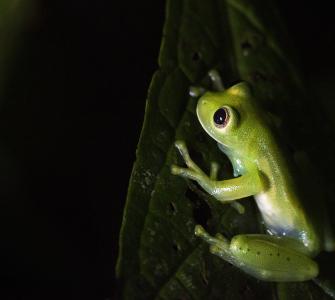The Monteverde Cloud Forest Biological Reserve is one of Costa Rica’s most emblematic conservation areas and among the most biodiverse ecosystems on Earth. Situated along the Tilarán mountain range on the Continental Divide, this mist-shrouded forest protects over 4,000 hectares (10,000 acres) of tropical cloud forest, home to more than 100 mammal species, 400 bird species, and 1,200 amphibian and reptile species—including all six of Costa Rica’s wild cat species: jaguars, pumas, ocelots, margays, oncillas, and jaguarundis. Managed by the Centro Científico Tropical (Tropical Science Center, TSC), Monteverde has long served as a global model for integrating research, education, and ecotourism with effective nature protection.
Cloud forests, named for the low-hanging mists that envelope their canopies, are unique ecosystems sustained by perpetual moisture and rich in endemic life. Yet Monteverde’s delicate balance is increasingly threatened by climate change and land-use pressures. Rising temperatures, deforestation in surrounding areas, and shifting weather patterns are expected to reduce the forest’s characteristic cloud cover, disrupt its hydrological cycle, and endanger countless species—especially amphibians, already in sharp decline.
To support the long-term conservation of this critical ecosystem, Conservation Strategy Fund (CSF) partnered with the Tropical Science Center to conduct an economic valuation of Monteverde’s ecosystem services and cultural value. The study examined 13 key ecosystem services, including water provision, carbon storage, pollination, soil fertility, erosion control, moderation of extreme weather, recreation and tourism, and spiritual and cultural inspiration. Using a benefit transfer approach—combining global datasets with primary data from local tourism—CSF estimated the total economic value that the Reserve provides to people locally, nationally, and globally.
The results are striking. Monteverde generates an estimated US$2,800 per hectare per year in ecosystem services, equivalent to roughly US$11.3 million annually across the Reserve’s 4,036 hectares. Climate regulation, tourism and recreation, and water provision together account for over 90% of this value. Tourism alone contributes more than US$1.7 million annually from entry fees—significantly more when including guided tours and other services. Over an 80-year period, the net present value of these benefits is estimated at US$732 million, underscoring the enduring intergenerational importance of keeping the forest intact.
These findings send a clear message: protecting Monteverde is both an ecological necessity and an economically sound investment. The benefits of maintaining the forest far exceed any short-term gains from activities such as agriculture, logging, or urban expansion. For a private reserve that relies on limited financial resources, quantifying its economic value helps strengthen the case for innovative financing mechanisms such as payments for ecosystem services, environmental trust funds, green bonds, or biodiversity offsets—tools that can secure sustainable funding for future management.
The study also provides essential technical evidence to support the Tropical Science Center’s goal of achieving IUCN Green List recognition for Monteverde, which requires proof that the reserve maintains key ecosystem services while preserving its ecological integrity. By establishing a baseline for monitoring and quantifying its benefits, this analysis contributes directly to the long-term resilience of the Reserve’s management systems.
Ultimately, what visitors feel as they walk through Monteverde’s misty trails—the sense that this forest is priceless—is now backed by evidence. Monteverde’s trees store carbon that stabilizes our climate, its roots regulate the water that sustains communities downstream, and its rich biodiversity inspires scientists and travelers alike. By revealing its economic worth, CSF and TSC hope to provide a new language for conservation—one that speaks not only to the heart, but also to the balance sheet, ensuring that the value of nature is recognized, protected, and passed on for generations to come.
___
Photo: The Andes giant glass frog (Espadarana andina) courtesy of Marcello Hernández-Blanco

